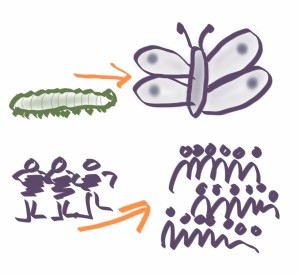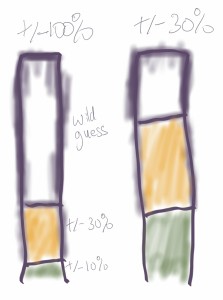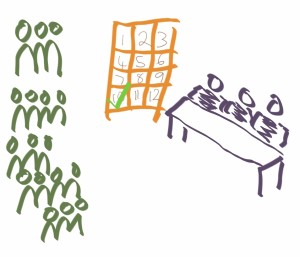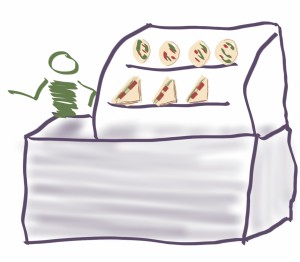No process or action can become 100% efficient without negatively impacting the surrounding processes or the interconnections which make up the whole.
This idea can easily be seen the following examples
1) A production line in a manufacturing plant; at the beginning the parts are loaded onto a conveyor belt to be assembled at each point along the assembly line. If the parts are loaded onto the conveyor belt with the “highest efficiency” then the whole production line eventually bottle necks under the inundation of parts. So many parts could be loaded at the beginning of the production line that the conveyor belt can not even move the physical weight of the initial parts. Assuming that the conveyor belt can move the massive load of parts to the next station then this process will become the bottle neck.
The basic fact is that the simplest tasks can be made so efficient that they can actually begin to put loading pressure upon the more “complex” processes or actions in the work stream.
2) In teaching the most basic definition is to expose students to ideas and facts. Efficiency in teaching can be attained by “giving students the answers”. The students now have the end result in the shortest possible time therefore highly efficient. They can now regurgitate back the answer at will and all is well, in “efficiency land” but at what cost?
So how is the second example negative?
The student has taken a shortcut to get the answers but has been robbed of the journey of self-discovery and right to comprehend the concept in their own way. Why is this important? The simple and undeniable fact is that not everyone understands things the same way, we all see the world differently and our minds grasp concepts in varying ways. In teaching, the fact is that no matter how good the lesson plan, different students will pick up on different points. You will often experience the influx of questions from students trying to make the concept (lesson) part of their knowledge. This is why varying the types of examples and alternate strategies to get the concept across is very important in my opinion.
I have personally run into the darker side of “giving students the answers”. The end result may be reasonably successful at the targeted level, say high school biology but once the student enters university the cracks often appear in that the students don’t seem to comprehend the underlying concepts of the ideas or have even been taught incorrectly by a teacher who themselves had a flawed perception of the fundamentals. This type of rote learning is efficient only to a degree and at a specific level. The sad truth is that only when you appreciate a concept or idea from multiple angles (perspectives) do you begin to comprehend and understand its true nature. Efficiency in conveying ideas and facts lay the foundations for future cracks in comprehension.
Economy of scale, bigger is better, diversify and “expand or perish” are familiar concepts, so much so that we just accept them without question. We rarely question the wisdom or trade-offs these catch phrases and their core philosophies entail.
The common approach is to find something to make more efficient, these are commonly the simplest tasks in a chain. To focus on these easily measured and easily modified processes seems beneficial but like in biochemistry once you effect the level of one chemical entity, the chemical systems equilibrium(s) are affected because of their interconnection.
When focusing on efficiency, keep in mind that focusing the “laser of efficiency” upon a certain task may cause adverse effects due to the cascade effect of proximity.
Final thoughts for now.
What if the efficiency becomes detrimental to the overall wellbeing of the whole? Where are the tip points, the hysteresis, and the “endocrine system” of an organisation? Difficult answers to simple questions. The problem we face when trying to find and answer these questions is that humans work in linear time, 20/20 hind sight, we often only become aware of things after they begin to happen and then we tend to react. Not a bad evolutionary response, fight or flight; but how can we stretch past this and see into the whole.




